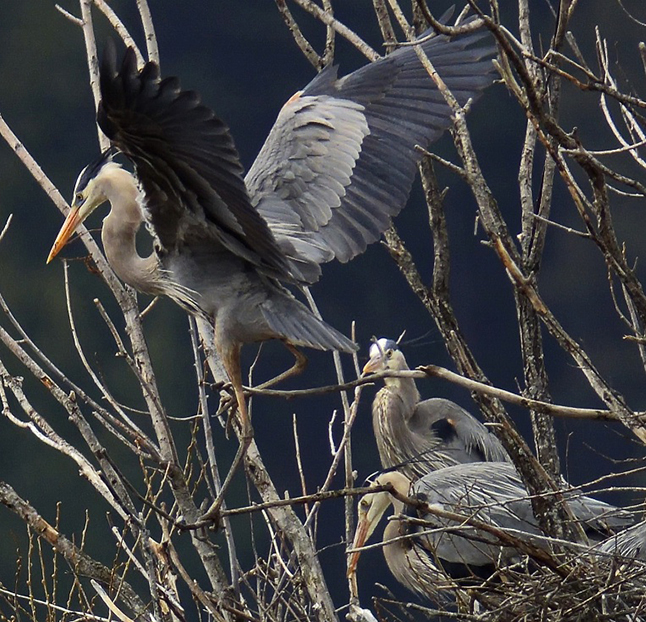
An inventory of Great Blue Heron breeding colonies in the North Columbia is now underway and the Fish & Wildlife Compensation Program hopes to see an improvement over the last inventory that, in 2004, found only one breeding site.
This new inventory, led once again by Marlene Machmer of Pandion Ecological Research Ltd., is hoping to find more this time around especially if the public takes an active interest in the project.
Anyone with heron sightings to report is encouraged to call 250-505-9978, email mmachmer@netidea.com, or submit their sightings online at fwcp.ca.
“North of Revelstoke and Golden, the only breeding site we found was near Valemount, although additional heron observations were submitted for Revelstoke Reservoir and Burges James Gadsden Provincial Park,” Machmer said in a statement annoiuncing the new inventory. “We really need the public’s help to identify more breeding sites. We are asking the public to report any heron nest sites, active breeding colonies, or large groups of herons feeding in areas throughout the basin, and especially from McBride to Valemount, and south to Revelstoke and Golden, since we have so little information for this northern region,” added Machmer.
The project is sponsored by the West Kootenay Naturalists’ Association, and is funded by Columbia Basin Trust and the Fish & Wildlife Compensation Program (FWCP).
Heron breeding activity has continued to decline in the southern portion of the Columbia Basin, based on 2016 monitoring results. At three rookeries south of Golden, breeding sites with 21, 15 and seven active nests were abandoned in 2016 due to crow, raven and/or bald eagle harassment and predation. Low rates of reproductive success were recorded at several additional sites. Similar abandonments and low productivity outcomes have become more frequent in recent monitoring years.
Heron habitat in the Basin has been significantly impacted by a variety of activities including extensive land development, construction and operation of dams, other human disturbances, as well as eagle and corvid predation.
“The Great Blue Heron has been identified as a species of interest by our regional Board,” says FWCP Columbia Region Manager Crystal Klym. “This work, together with follow-up stewardship efforts to protect important habitat, is a major step forward toward ensuring this iconic, and provincially Blue-listed species, continues to thrive here.”
The heron inventory and stewardship work started in 2016 and is continuing this year. A total of 48 projects – 17 fish and 31 wildlife – have been approved for funding in 2017-2018, for more than $5.5 million, by the FWCP in the Columbia Region. The FWCP is a partnership between BC Hydro, the Province of B.C., Fisheries and Oceans Canada, First Nations and Public Stakeholders to conserve and enhance fish and wildlife impacted by BC Hydro dams. For more information visit fwcp.ca.



